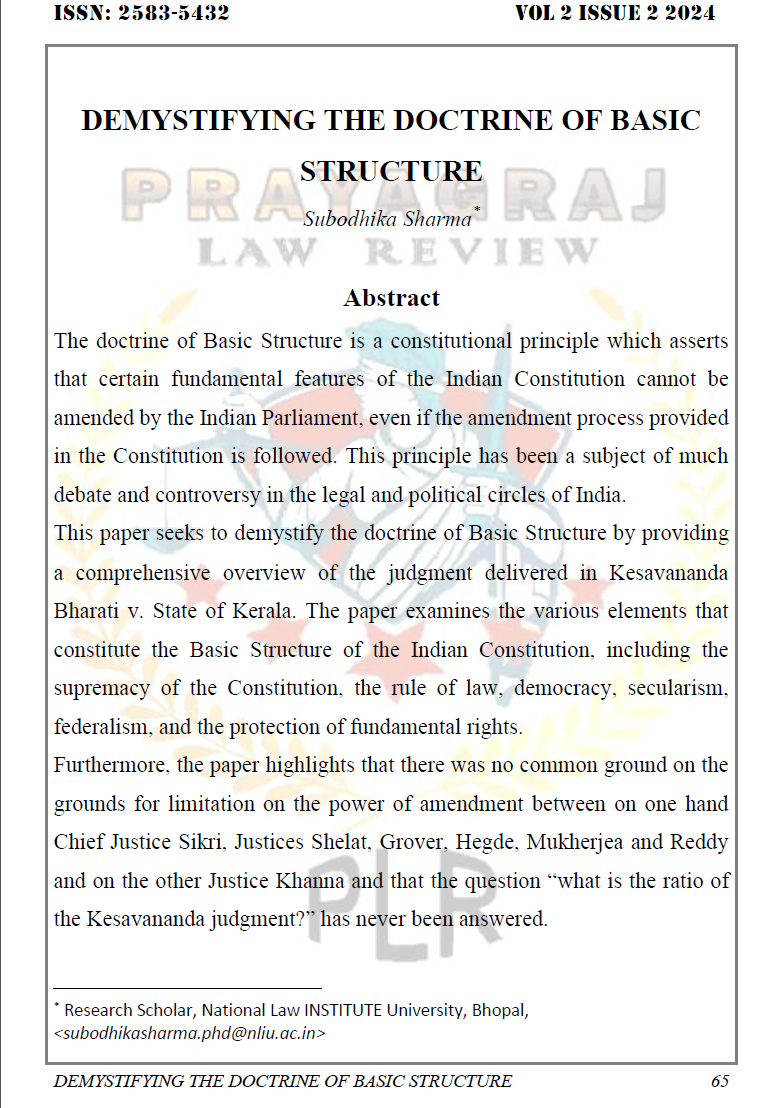
प्रकाशित 2024-09-01
संकेत शब्द
- Basic structure,
- Basic features,
- Amendment,
- Ratio,
- Constitution
##submission.howToCite##
##submission.copyrightStatement##
##submission.license.cc.by-nc-sa4.footer##सार
The doctrine of Basic Structure is a constitutional principle which asserts that certain fundamental features of the Indian Constitution cannot be amended by the Indian Parliament, even if the amendment process provided in the Constitution is followed. This principle has been a subject of much debate and controversy in the legal and political circles of India.
This paper seeks to demystify the doctrine of Basic Structure by providing a comprehensive overview of the judgment delivered in Kesavananda Bharati v. State of Kerala. The paper examines the various elements that constitute the Basic Structure of the Indian Constitution, including the supremacy of the Constitution, the rule of law, democracy, secularism, federalism, and the protection of fundamental rights.
Furthermore, the paper highlights that there was no common ground on the grounds for limitation on the power of amendment between on one hand Chief Justice Sikri, Justices Shelat, Grover, Hegde, Mukherjea and Reddy and on the other Justice Khanna and that the question “what is the ratio of the Kesavananda judgment?” has never been answered.
